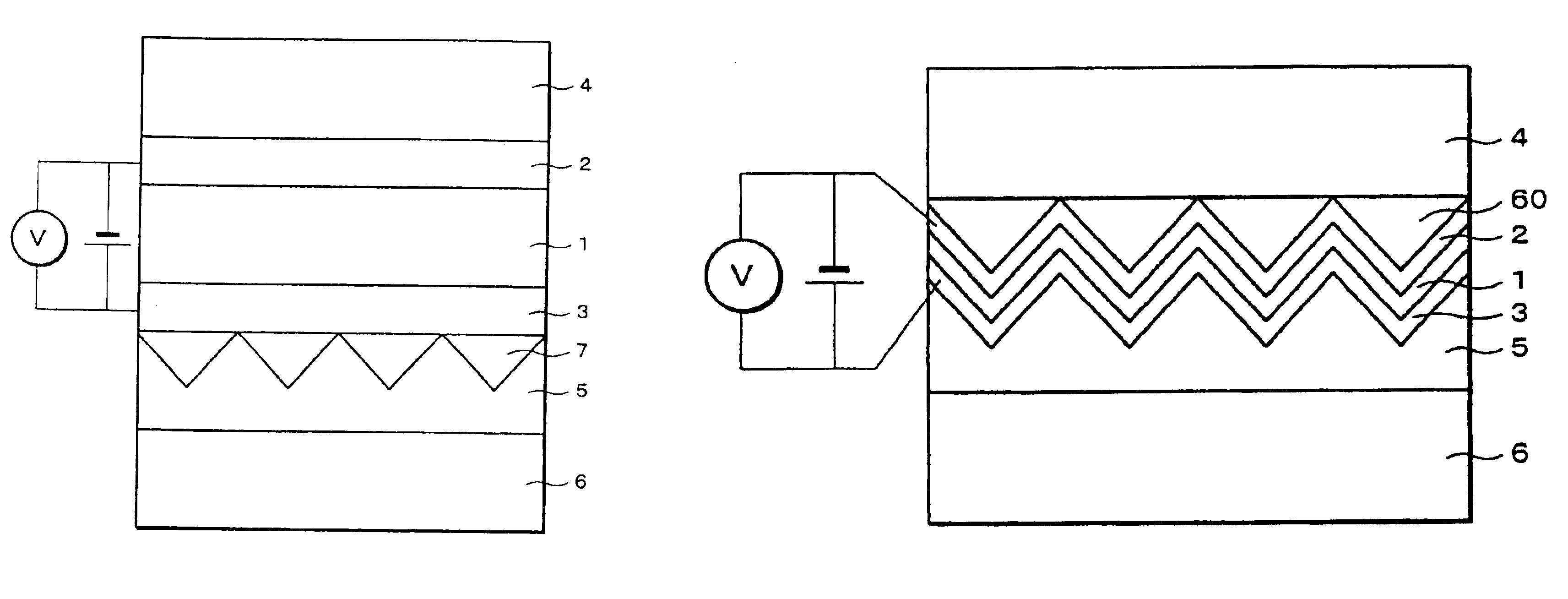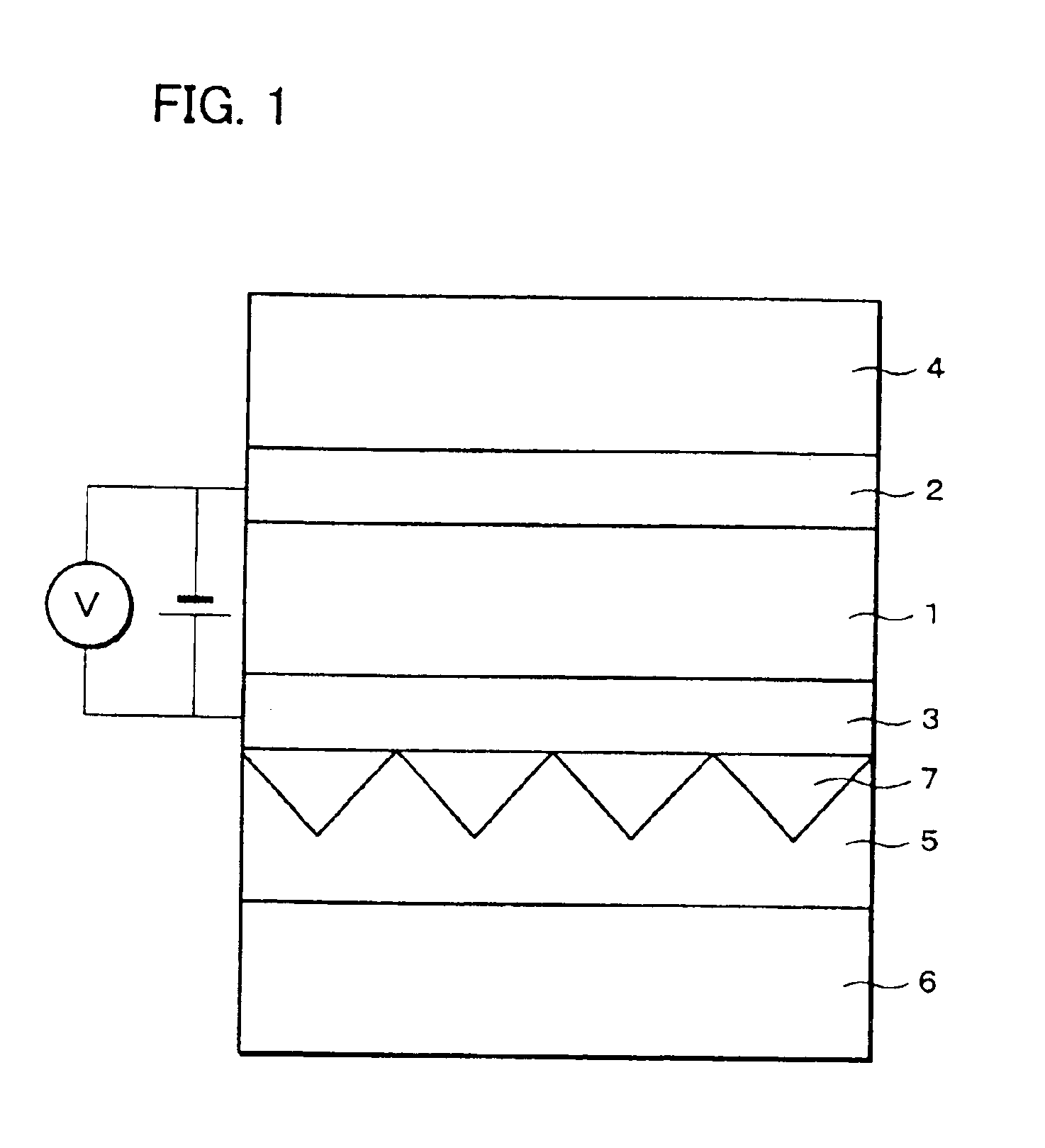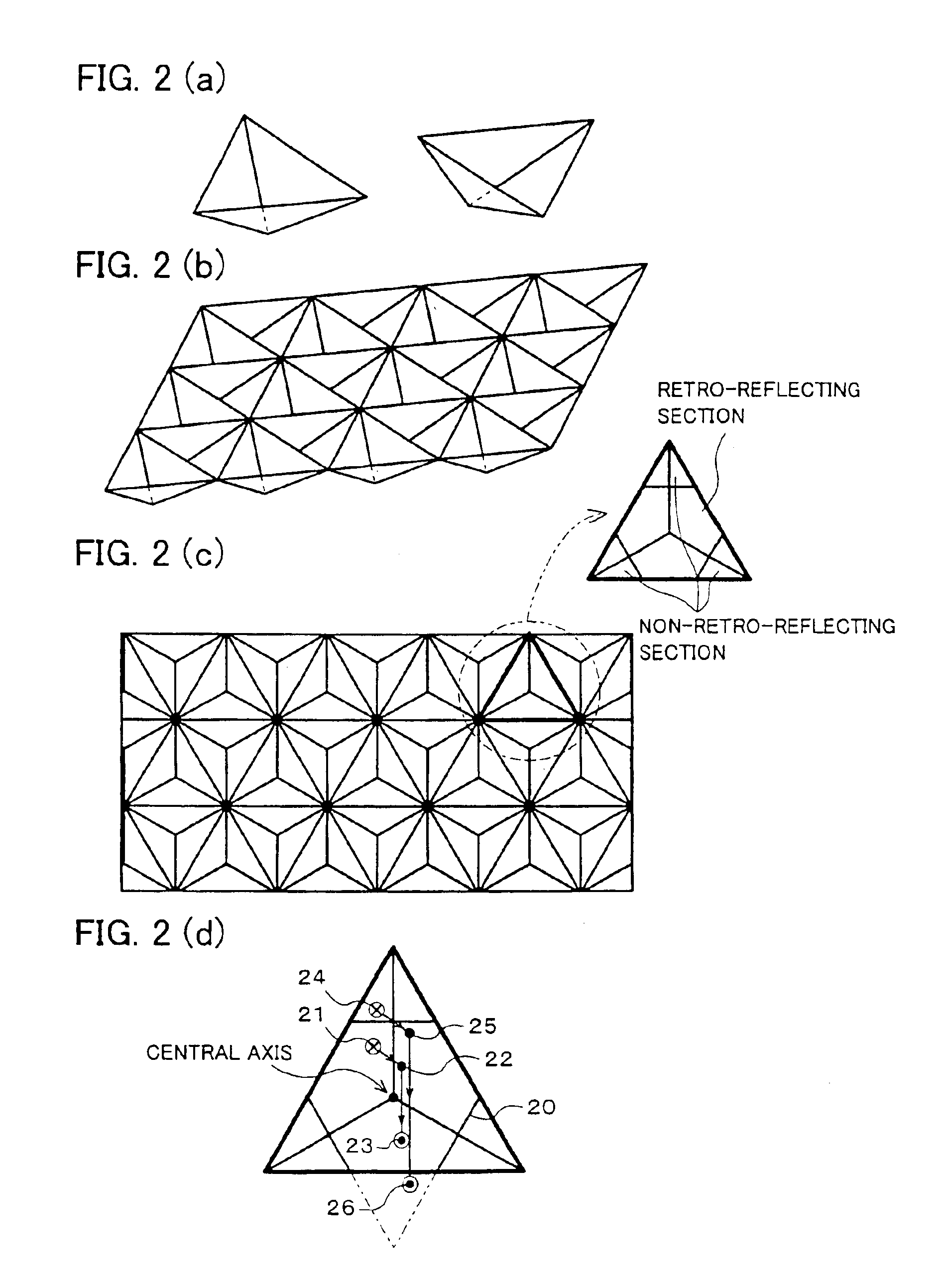Luminous display element
a technology of luminous display elements and display elements, which is applied in the direction of discharge tubes/lamp details, natural mineral layered products, solid-state devices, etc., can solve the problems of spoiled display visibility, less efficient light emitted in organic el display elements, and improved emission efficiency, so as to prevent an image, the effect of high contrast ratio and high utilization efficiency of emission
- Summary
- Abstract
- Description
- Claims
- Application Information
AI Technical Summary
Benefits of technology
Problems solved by technology
Method used
Image
Examples
first embodiment
[First Embodiment]
[0055]One embodiment of the present invention is described as follows based on FIG. 1 to FIG. 18(b).
[0056]FIG. 1 is a cross sectional view showing an example of a structure of an organic electroluminescence display element (hereinbelow referred to as organic EL display element), which is a luminous display element. The organic EL display element according to the present embodiment, as shown in FIG. 1, includes an organic electroluminescence layer (hereinbelow referred to as organic EL layer (emission layer)) 1, a transparent electrode 2, an alminium electrode 3, a front side substrate 4, a retro-reflector (optical member, reflecting member) 5, a back side substrate 6, and a flattening film 7.
[0057]The transparent electrode 2, the organic EL layer 1, and the alminium electrode 3 are formed on the front side substrate 4 which is made of materials such as a transparent glass plate and a polymeric film, toward the back side of the organic EL display element in this ord...
second embodiment
[Second Embodiment]
[0153]The second embodiment of the present invention is described as follows based on FIG. 19 to FIG. 24. Note that, components which have the same functions as the components in the first embodiment are given the same numerals, and descriptions thereof are omitted.
[0154]As shown in FIG. 19, an organic EL display element as a luminous display element according to the present embodiment differs from the organic EL display element of the first embodiment in that a louver (first light absorbing member) 101 is provided on the front side substrate 4. Excluding this louver 101, the present embodiment has the same structure as the first embodiment. In the present embodiment, a light control film (Sumitomo 3M products) is used as the louver 101.
[0155]The louver 101 allows light in a range of a view angle which is specified according to the size and the use of a screen of the organic EL display element to pass in a direction of thickness of the front side substrate 4 (that...
PUM
| Property | Measurement | Unit |
|---|---|---|
| transmittance | aaaaa | aaaaa |
| thickness | aaaaa | aaaaa |
| thickness | aaaaa | aaaaa |
Abstract
Description
Claims
Application Information
 Login to View More
Login to View More - R&D
- Intellectual Property
- Life Sciences
- Materials
- Tech Scout
- Unparalleled Data Quality
- Higher Quality Content
- 60% Fewer Hallucinations
Browse by: Latest US Patents, China's latest patents, Technical Efficacy Thesaurus, Application Domain, Technology Topic, Popular Technical Reports.
© 2025 PatSnap. All rights reserved.Legal|Privacy policy|Modern Slavery Act Transparency Statement|Sitemap|About US| Contact US: help@patsnap.com



